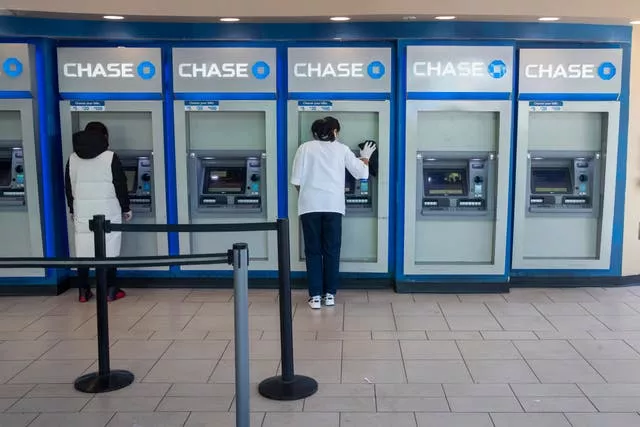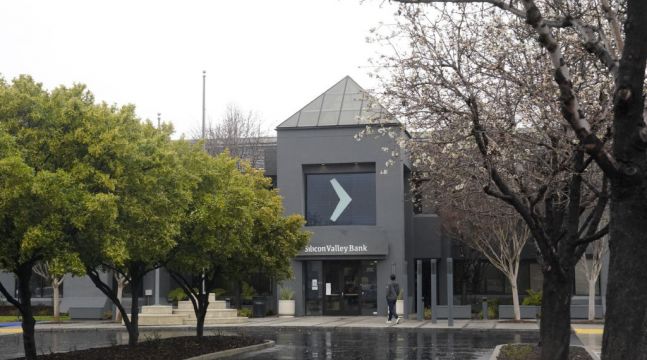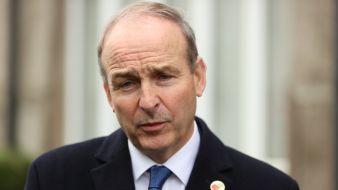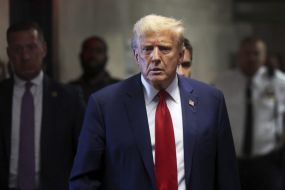The US government took extraordinary steps to stop a potential banking crisis after the historic failure of Silicon Valley Bank, assuring all depositors at the failed institution that they could access all their money quickly, even as another major bank was shut down.
The announcement came amid fears that the factors that caused the Santa Clara, California-based bank to fail could spread.
Regulators had worked all weekend to try to find a buyer for the bank, which was the second-largest bank failure in history.
Those efforts appeared to have failed.
In a sign of how fast the financial bleeding was occurring, regulators announced that New York-based Signature Bank had also failed and was being seized on Sunday.
This morning, the Government and the Bank of England facilitated a private sale of Silicon Valley Bank UK to HSBC
Deposits will be protected, with no taxpayer support
I said yesterday that we would look after our tech sector, and we have worked urgently to deliver that promise— Jeremy Hunt (@Jeremy_Hunt) March 13, 2023
At more than $110 billion, Signature Bank is the third-largest bank failure in US history.
Meanwhile, the UK arm of the collapsed lender was bought by HSBC after the British government and Bank of England stepped in to “facilitate” a private sale.
British chancellor Jeremy Hunt confirmed that all customer deposits have been protected under the deal, with no taxpayer cash involved.
The near-financial crisis that US regulators had to intervene to prevent left Asian markets jittery as trading began Monday.
Japan’s benchmark Nikkei 225 slipped about 1.2 per cent in morning trading. Australia’s S&P/ASX 200 shed 0.6 per cent to 7,104.30.
South Korea’s Kospi, though, was little changed.
In an effort to shore up confidence in the banking system, the Treasury Department, Federal Reserve and FDIC said on Sunday that all Silicon Valley Bank clients would be protected and able to access their money.
They also announced steps that are intended to protect the bank’s customers and prevent additional bank runs.
A joint statement for @Jeremy_Hunt & @hmtreasury, from a number of leading UK venture capital funds, in support of @SVB_UK pic.twitter.com/7dGHh3WHnr
— Atomico (@atomico) March 11, 2023
“This step will ensure that the US banking system continues to perform its vital roles of protecting deposits and providing access to credit to households and businesses in a manner that promotes strong and sustainable economic growth,” the agencies said in a joint statement.
Under the plan, depositors at Silicon Valley Bank and Signature Bank, including those whose holdings exceed the $250,000 insurance limit, will be able to access their money on Monday.
In a separate move, the US Federal Reserve late Sunday announced an expansive emergency lending programme that is intended to prevent a wave of bank runs that would threaten the stability of the banking system and the economy as a whole.
Fed officials characterised the programme as akin to what central banks have done for many decades: Lend freely to the banking system so that customers would be confident that they could access their accounts whenever needed.
The lending facility will allow banks that need to raise cash to pay depositors to borrow that money from the Fed, rather than having to sell Treasuries and other securities to raise the money.

Silicon Valley Bank had been forced to dump some of its Treasuries at at a loss to fund its customers’ withdrawals.
Under the Fed’s new program, banks can post those securities as collateral and borrow from the emergency facility.
The Treasury has set aside $25 billion to offset any losses incurred under the Fed’s emergency lending facility. Fed officials said, however, that they do not expect to have to use any of that money, given that the securities posted as collateral have a very low risk of default.
Analysts said the Fed’s program should be enough to calm financial markets on Monday.
“Monday will surely be a stressful day for many in the regional banking sector, but today’s action dramatically reduces the risk of further contagion,” economists at Jefferies, an investment bank, said in a research note.
Though Sunday’s steps marked the most extensive government intervention in the banking system since the 2008 financial crisis, its actions are relatively limited compared with what was done 15 years ago.
The two failed banks themselves have not been rescued, and taxpayer money has not been provided to the banks.
President Joe Biden said on Sunday evening as he boarded Air Force One back to Washington that he would speak about the bank situation on Monday.
In a statement, Mr Biden also said he was “firmly committed to holding those responsible for this mess fully accountable and to continuing our efforts to strengthen oversight and regulation of larger banks so that we are not in this position again”.
Regulators had to rush to close Silicon Valley Bank, a financial institution with more than $200 billion in assets, on Friday when it experienced a traditional run on the bank where depositors rushed to withdraw their funds all at once.
It is the second-largest bank failure in US history, behind only the 2008 failure of Washington Mutual.
Some prominent Silicon Valley executives feared that if Washington didn’t rescue the failed bank, customers would make runs on other financial institutions in the coming days.
Stock prices plunged over the last few days at other banks that cater to technology companies, including First Republic Bank and PacWest Bank.
Among the bank’s customers are a range of companies from California’s wine industry, where many wineries rely on Silicon Valley Bank for loans, and technology start-ups devoted to combating climate change.







